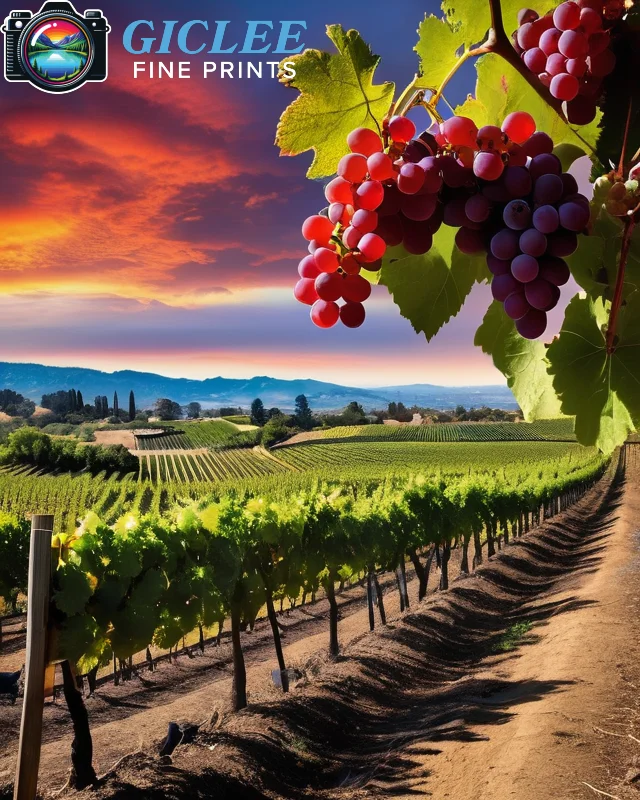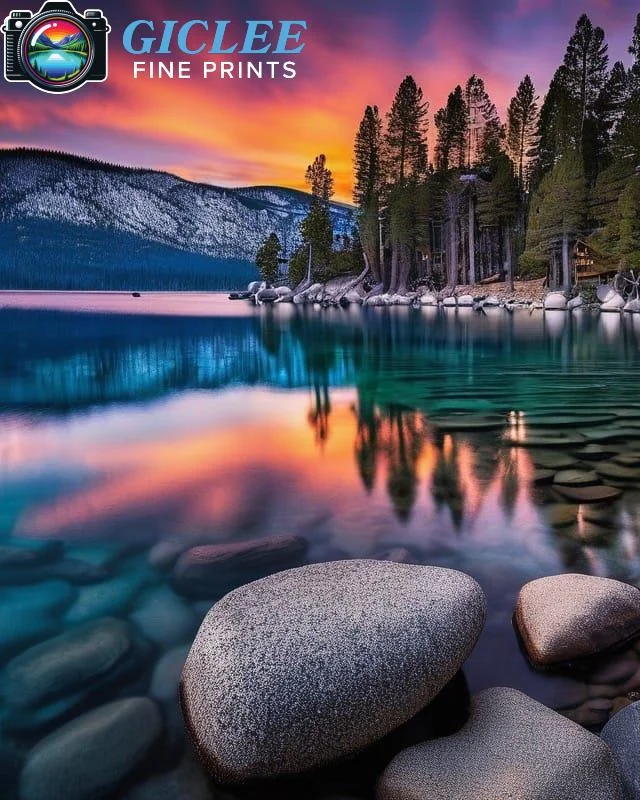
Framing your art prints is an essential step in showcasing and preserving their beauty. The right frame can elevate your artwork, enhance its presentation, and protect it for years to come. Whether you’re framing canvas prints, fine art paper prints, or metal prints, choosing the right materials and style is critical to creating a stunning display. At Giclee Fine Prints, we specialize in helping artists and photographers create beautiful framed prints that highlight their work.
Choose the Right Frame Material
The material of the frame plays a crucial role in the overall look and durability of your art print. The right frame material should complement the artwork, match the decor, and provide adequate protection.
Key Frame Materials:
Wood Frames: Classic and versatile, wood frames come in a variety of finishes, from light natural wood to darker, stained wood. Wood frames offer warmth and are perfect for traditional, rustic, or natural-themed artwork.
- Best for: Fine art paper prints, landscapes, and portrait photography.
Metal Frames: Sleek and modern, metal frames work well for contemporary art and photography. They provide a clean, minimalist look while offering durability.
- Best for: Modern photography, abstract prints, and minimalist decor.
Acrylic or Plexiglass Frames: Acrylic frames provide a lightweight, modern alternative to glass and are great for showcasing art without heavy, bulky frames. They work well with prints that require a frameless or “floating” effect.
- Best for: Contemporary art or art photography where a modern, clean look is desired.
Best For:
- Artists and photographers looking to choose a frame material that enhances the artwork and matches the style of the space where it will be displayed.
Consider the Frame Style and Color
The style and color of the frame should complement the artwork without overpowering it. The frame should enhance the visual elements of the piece while also fitting seamlessly into the room’s decor.
Key Tips:
- Match the Artwork Style: For classic or traditional artwork, choose ornate or wood frames in rich tones. For modern, minimalist pieces, opt for sleek metal frames in neutral colors like black, white, or silver.
- Neutral Colors Work Best: Black, white, and natural wood frames are timeless and versatile, working with a wide range of art styles and color schemes. These neutral tones allow the artwork to be the focal point.
- Avoid Overly Bold Frames: While bold-colored frames can be eye-catching, they may distract from the artwork. If you want a pop of color, consider adding it through matting rather than the frame.
Best For:
- Fine art prints and photography where the frame should complement the artwork and not compete for attention.

Use Matting to Enhance the Presentation
Matting adds a professional, polished look to framed prints. It creates a visual buffer between the artwork and the frame, drawing attention to the piece and preventing it from feeling crowded.
Key Tips:
- Choose Neutral Mats: White or off-white mats are the most common and versatile choices, creating a clean and professional presentation. These colors provide a subtle backdrop that highlights the artwork without overwhelming it.
- Consider Wide Mats for Impact: Using a wider mat (2-4 inches) creates a gallery-style presentation and gives the artwork room to breathe. Wide mats are especially effective for smaller or medium-sized prints, adding gravitas to the overall display.
- Double Mat for Depth: Adding a second, inner mat in a contrasting color can add depth and dimension to your framed print. This is a great option for adding a pop of color or highlighting specific tones in the artwork.
Best For:
- Art prints and photographs where matting enhances the presentation and gives the print a polished, gallery-quality appearance.
Frame Size: Proportions Matter
Choosing the right frame size is just as important as selecting the right material or style. The frame should be proportional to the size of the print and complement the space where it will be displayed.
Key Tips:
- Balance Frame Width with Print Size: For smaller prints, opt for narrower frames to avoid overwhelming the artwork. Larger prints can handle wider frames, which provide balance and make a strong visual statement.
- Consider Room Size: In a large room or open space, you can opt for a larger frame to fill the space. For smaller spaces or gallery walls, smaller frames with narrow borders work best.
- Custom Sizes: If your print has unique dimensions or doesn’t fit standard frame sizes, consider custom framing. Custom frames ensure the artwork is perfectly sized and protected.
Best For:
- Artists and collectors who want the perfect frame-to-print proportion for their artwork, ensuring a balanced, cohesive look.
Consider the Glazing: Glass or Acrylic?
The glazing, or the covering that protects your print, is an essential part of framing. The two main options are glass and acrylic (also known as plexiglass), and both offer protection against dust, moisture, and UV light.
Key Tips:
- Glass for Fine Art Prints: Glass provides excellent clarity and protection for fine art paper prints. It is available in standard, non-reflective, and UV-protective options. However, glass is heavier and more fragile than acrylic, so it’s best suited for framed pieces that will be displayed in low-traffic areas.
- Acrylic for Larger or Fragile Prints: Acrylic is lightweight, shatter-resistant, and offers UV protection. It’s ideal for large prints, canvas prints, or when the artwork will be displayed in busy areas where there is a risk of damage.
- UV Protection: Consider using UV-protective glass or acrylic to prevent fading from sunlight exposure. This is especially important for high-quality prints or artworks displayed in well-lit rooms.
Best For:
- High-value art prints or photographs that require protection from dust, sunlight, and moisture to maintain their quality over time.

Ensure Proper Hanging and Display
Once you’ve selected the perfect frame, the final step is to hang your art print correctly to ensure it looks its best and is displayed securely.
Key Tips:
- Use the Right Hardware: For heavier frames, make sure to use appropriate hardware, such as wall anchors or picture hooks, to ensure the frame is securely mounted. Lightweight prints can often be hung with standard nails or adhesive hooks.
- Center at Eye Level: The center of the artwork should be at eye level, typically around 57-60 inches from the floor. For larger pieces or artwork displayed above furniture, adjust the height accordingly, ensuring the artwork is visually balanced within the space.
- Use a Level for Precision: Always use a level when hanging framed prints to ensure they are straight and aligned. For gallery walls or multi-panel prints, spacing and alignment are key to creating a cohesive display.
Best For:
- Homeowners and collectors looking to create a professional, balanced display that enhances the artwork’s impact in the room.
Framing Canvas Prints: To Frame or Not to Frame
Canvas prints have a unique, textured appearance that allows them to be displayed with or without a frame. When framing canvas prints, the choice of style will depend on the look you’re trying to achieve.
Key Options:
- Gallery-Wrapped Canvas: A gallery-wrapped canvas is stretched over a wooden frame with the image extending around the edges, creating a frameless, modern look. This is ideal for contemporary spaces or large statement pieces.
- Framed Canvas: For a more polished or traditional appearance, you can choose to frame the canvas. Floating frames are a popular choice for canvas prints, as they create a small gap between the canvas and the frame, giving the artwork a “floating” effect.
- No Glass Needed: Unlike fine art paper prints, canvas prints do not require glass or acrylic glazing. The canvas itself is durable and protected, making it easier to display without worrying about glare or reflection.
Best For:
- Canvas prints that can either be displayed frameless for a modern look or framed for a more polished, traditional style.
Contact Us
Our address is: 3816 Pioneer Trail Ste #3, South Lake Tahoe, CA 96150
Email: Info@gicleefineprints.com
FAQs
Wood frames or metal frames work well for fine art prints. Wood offers a classic, warm aesthetic, while metal provides a sleek, modern look. Neutral colors like black, white, or natural wood are versatile options that suit most prints.
While matting is optional, it adds a polished, professional look to your print. It creates a visual buffer between the print and the frame, drawing attention to the artwork and preventing it from feeling crowded.
For smaller, fine art paper prints, glass is a great option. If you’re framing a large print or displaying artwork in a busy area, acrylic is lightweight and shatter-resistant. Both materials are available with UV protection to prevent fading.


